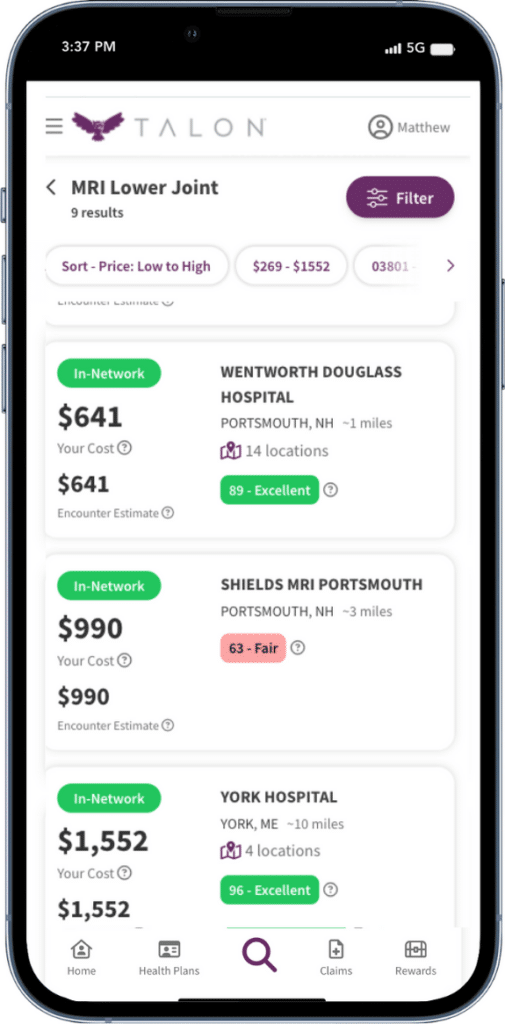By: Maria Williams
The Transparency in Coverage Rule is a beacon of hope for healthcare consumers and employers alike. Still, if consumers aren’t using it to lower healthcare costs, it could be used against them. Enacted to shed light on the often opaque world of healthcare pricing, this regulation promises to revolutionize how Americans access and understand the costs associated with their medical care.
Central to the Transparency in Coverage Rule is the mandate for insurers and healthcare providers to furnish consumers with accessible, understandable information regarding medical services and procedure costs. At the forefront of this initiative is developing a web-based cost-comparison shopping tool. Tailored to individual health plans, networks, and deductibles, this tool empowers consumers to make informed decisions about their healthcare expenditures and shop for value-based care.
“When it was first introduced, the transparency movement was opposed by health systems and health plans. Much of the price transparency data being published originated from these groups, and employers were dependent upon them to publish this data. However, the awareness and messaging of the issue never trickled down from health plans and health systems to employers and their employees,” said Mark Galvin, co-founder and CEO of TALON, the leader in healthcare price transparency.
Ultimately, it is incumbent upon employers to create awareness and educate their employees regarding price transparency. Now that this information is available, employers/plan sponsors must fulfill their fiduciary duties and ensure that they are receiving commensurate value for the cost of services. There have already been two major class action lawsuits against two sizable employer groups (Mayo Clinic and Johnson & Johnson) that stem from these transparency efforts. Many more will likely follow, as had occurred within the retirement fund space.

Photo Courtesy: TALON
Why Price Transparency Matters:
Price transparency is not merely a matter of fiscal prudence but a fundamental consumer empowerment tenet. For employers and employees, the ability to discern the true cost of medical services is paramount. The prevalence of radical price variation — with disparities of 10 to 25 times between providers for the same procedure — underscores the urgency of this issue. In an era where healthcare costs spiral, transparency is a bulwark against financial exploitation. It ensures that both employers and employees receive optimal value for their healthcare investments.
The ramifications of price transparency extend far beyond the realm of individual pocketbooks. By fostering a climate of competition and accountability, this initiative promises lower costs and heightened efficiency within the healthcare sector. Employers stand to benefit from reduced expenditure on healthcare benefits, freeing up resources for innovation and growth. Meanwhile, employees can anticipate greater control over their healthcare spending and enhanced access to high-quality, cost-effective care. In essence, transparency ensures fiscal savings and a paradigm shift in the delivery and reception of healthcare services.
Knowledge is Power
Healthcare cost transparency is opening a new era of consumer empowerment. The implications are manifold, ranging from increased wages and greater funding for Health Savings Accounts (HSAs) to a more judicious allocation of healthcare resources. With transparency, consumers have unprecedented agency in navigating the complexities of the healthcare landscape, allowing them to seek the most cost-effective and value-driven avenues for their medical needs.
If healthcare consumers fail to seize the opportunity to use the government-mandated tools to navigate care, healthpayers can exploit this same data to their advantage, leading to adverse effects on healthcare consumers. “We’re already seeing payers and health systems using this data for strategic decision-making, market penetration, and potential consolidation. We’ve seen repeatedly that consolidation within healthcare means higher costs, higher premiums, lower quality, and decreased accessibility. That means consumers would face higher out-of-pocket costs, decreased take-home pay due to the increased premiums, and postponed care, potentially leading to more sick consumers.” said Galvin.
By harnessing the power of information, we pave the way for a future where healthcare is not merely a commodity but a right accessible to all. As the adage goes, knowledge is power — and in the realm of healthcare, transparency is the key to unlocking a brighter, healthier tomorrow.
Published By: Aize Perez
